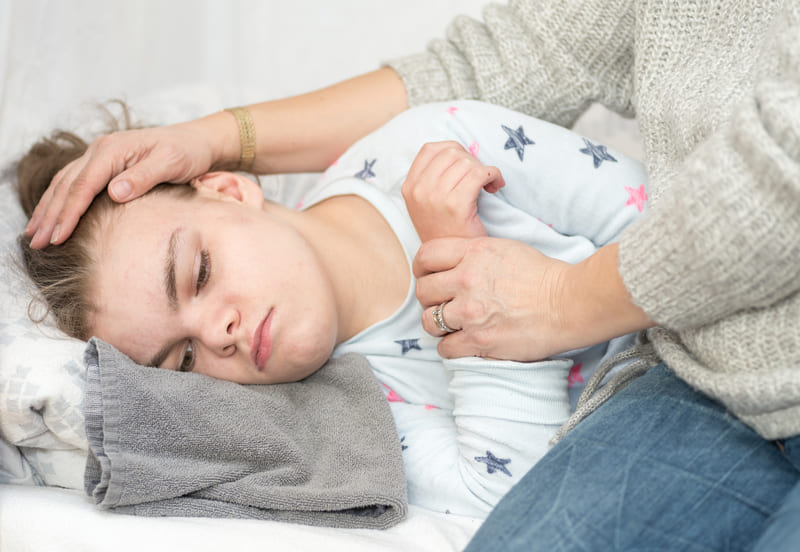Blog Post
First Aid Training: Myths Debunked

It is a well known fact that when first aid training is applied properly in emergency situations that it can be the difference between life and death. Although first aid has been around for many years, the training has been revised many times in order to improve effectiveness as medical experts learn more about the human body and how it functions. These changes to what are considered best practice have allowed myths about how to respond to emergencies to be formed and spread around.
At EMCARE we understand how important first aid training can be in saving lives and as one of South Africa's best and most experienced training facilitators we pride ourselves on keeping up to date with modern first aid techniques and healthcare education.
In this article let us look to review some of the most common myths about responding to healthcare emergencies. We will briefly discuss each myth and then look to provide facts about the current best treatment methods taught through comprehensive first aid training. The facts provided are only a glimpse of what you can learn through one of our three EMCARE first aid courses. So, keep reading to learn more about how to actually respond to some common medical emergencies.
Myth 1: Butter And Oil Remedy For Burns
One of the oldest emergency healthcare myths is more an old wife's tale rather than a piece of information provided by a responsible first aid training academy. The myth goes that if you receive a minor burn yourself (there are generally three grades of burn with grade one being the least severe and grade three being the most severe) well cooking or working with fire, that by applying either oil or butter that you can get rid of the burning sensation, and slowly start to treat the burn wound.
Fact:
Although this would have been a convenient way to treat a wound, as most households have access to
either
butter or oil, unfortunately as the title suggests, this is just a myth. Using butter or oil can
actually
cause more damage to the burn than good.
This is because when you apply either butter or oil to a wound, what you are really doing is trapping the innate heat from the burn wound in, and not allowing it to dissipate which causes more damage to the skin. The best way to provide immediate treatment utilising your first aid training, is to apply running cold water over the wound for approximately fifteen minutes.
However, this is only effective for minor grade one, or smaller grade two wounds, this would not be appropriate for grade three burns. In either situation it is best to seek the help of a medical professional, after applying emergency first aid.
Myth 2: Responding To Seizures
Seizures can be an incredibly scary medical emergency, that may be very difficult for those who are untrained to deal with. Seizures can have lots of different signs and symptoms that are difficult to handle. These include common symptoms like uncontrollable convulsions, the body stiffening, a loss of consciousness and eyes rolling back into the head. Someone experiencing a severe seizure may also begin drooling and involuntarily release their bowels.
One of the most common myths surrounding treating seizures is the idea that it is important to restrain the person experiencing a seizure. This generally requires holding them down in order to combat the convulsions.
Fact:
Because of the severity, and medical complexity that surrounds seizures, first aid training will teach
you
to first seek professional medical assistance immediately, as there is no sure fire way to deal with a
seizure. However, while waiting for help to arrive what can you do?
Holding someone down who is experiencing a seizure is actually a dangerous myth that can cause further damage to both the patient and those holding them down. As holding them down well, experiencing uncontrollable convulsions can lead to them hurting themselves physically or even striking those attending to them.
EMCARE first aid training shows that the best way to help in these situations is to remove any objects from the surrounding area that could cause harm. It is also suggested to try to place a pillow under their head in order to protect it from knocking against the ground, and if possible, to turn them onto their side in order to make sure their airway is clear. Then you should let the seizure run its course until professional help arrives.

Myth 3: Treating A Snake Bite
Did you know that South Africa has one of the most diverse snake populations in the world. The country hosts an impressive 176 different species and subspecies of snakes. Of those 176 species about twenty of them are able to inflict a poisonous bit that could lead to death if not treated.
If you have ever watched a movie in which someone is bitten by a snake, you may already know what the myth might be. Many shows portray the myth that the best way to assist someone who has been bitten by a poisonous snake is to suck the venom out of the wound. The idea is that by sucking out the venom quickly enough that you can prevent it from entering into the bloodstream and spreading around the body.
Fact:
Sucking out venom is not recommended as it can actually lead to further damage of the skin tissue, may
potentially impact the person trying to help, and most importantly is not very effective in actually
removing the poison from the bite.
At EMCARE, our first aid training teaches that the best way to help in this situation is to keep the impacted limb immobilised as movement may cause the poison to spread more quickly. You should also look to keep the infected limb below the level of the heart (this may mean you need to prevent the person from lying down), as gravity will provide a small amount of assistance in preventing the poison from reaching the most essential organs. As with every other case it is of course essential in the case of a snake bite to seek professional medical help.

Modern First Aid Training With EMCARE
In this article we examined only three of the medical myths that exist, there are countless more out there. In each case you saw that applying these myths can actually do more damage than good. We recommend that in order to provide educated and effective help, one should look to find a modern first aid training program.
We at EMCARE provide these sorts of programs and a whole lot more. So, if you want to be effective in an emergency situation, don't hesitate to visit our website today and learn how we can help you, help others.
GET IN TOUCH
There are a few ways to reach us below. Please feel free to contact us via phone, email or you can send us a message via the form provided and we will get back to you.




















